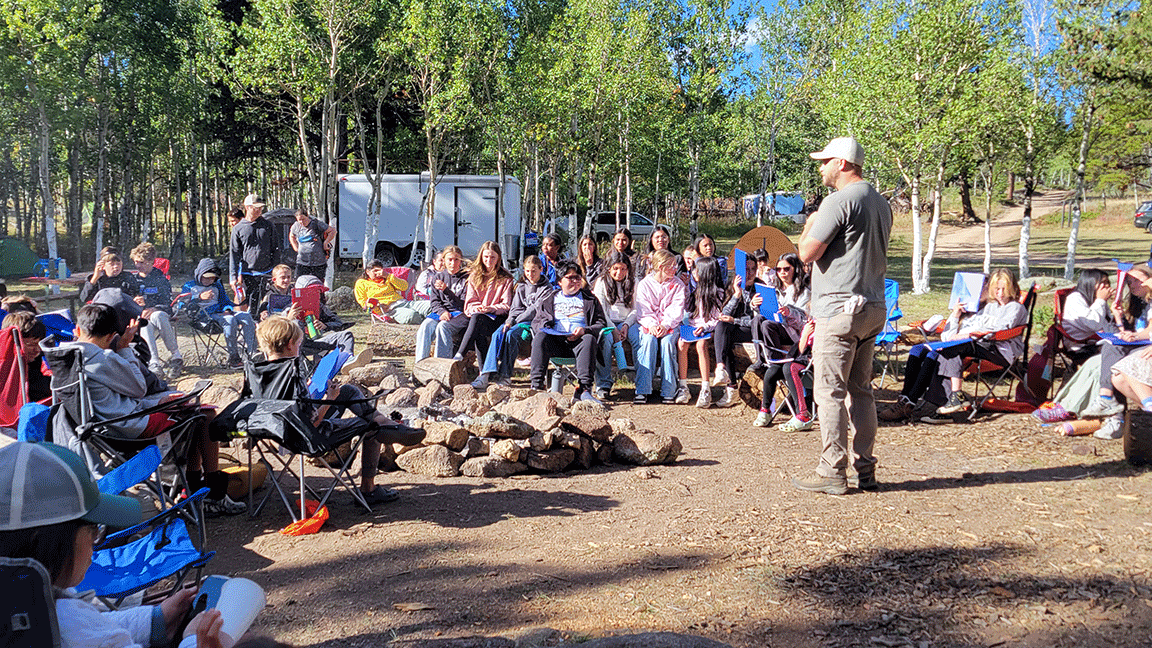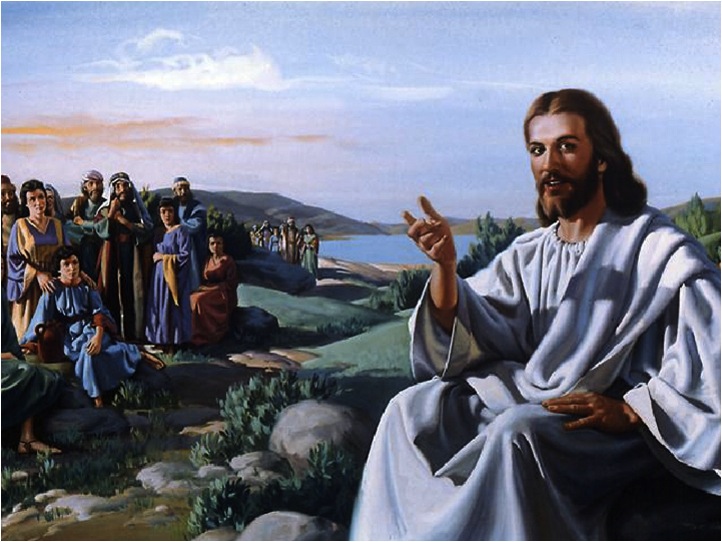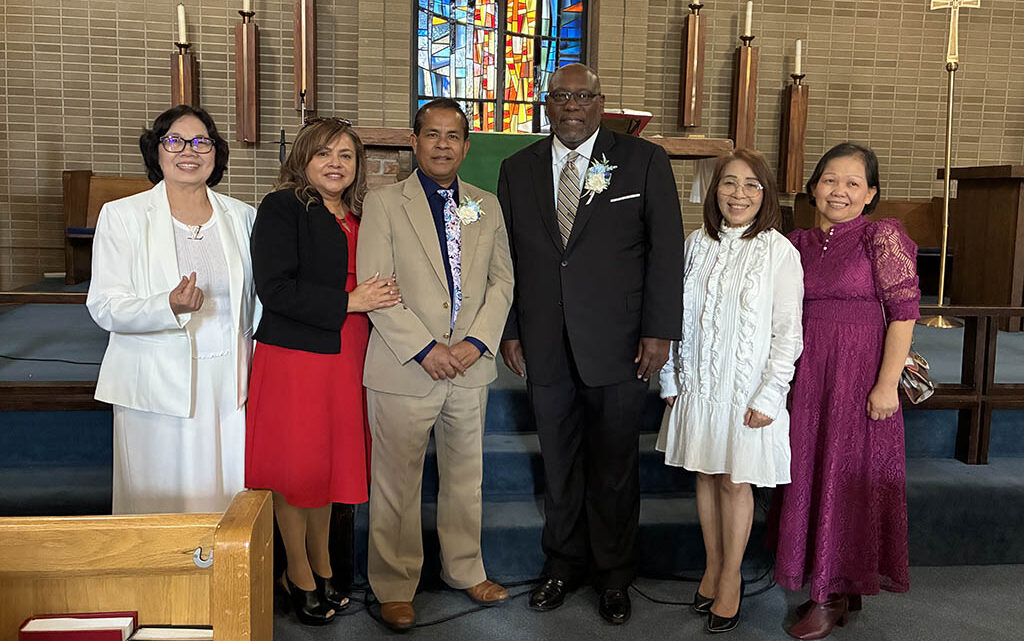Adventist News
 Ken Norton to Become Speaker/Director for Voice of Prophecy
Guest Contributor – December 16, 2025
Ken Norton to Become Speaker/Director for Voice of Prophecy
Guest Contributor – December 16, 2025
Dr. Ken Norton, Voice of Prophecy Bible School director, has accepted the invitation of the North American Division to become the speaker/director of the ministry. Norton will begin in his new role in January. Norton joined the Voice of Prophecy in March of this year as director of the Discover Bible School. Prior to his time at the Voice of Prophecy, he served as president of the Montana Conference from 2021 to 2025 and president of the Guam-Micronesia Mission from 2016 to 2021. Norton replaces Shawn Boonstra, who in May left the ministry to become an associate editor at the Adventist Review. In evaluating Norton for this position, division leadership was especially drawn to his experience in using media for evangelism. “Ken brings a deep commitment to Christ-centered evangelism, a passion for communicating biblical truth, and a strong sense of mission to this historic ministry,” says Rick Remmers, Voice of Prophecy board chairman and NAD assistant to the president. “With experience in pastoral leadership, media ministry, and holding public evangelistic meetings, he is well prepared to guide the Voice of Prophecy as it continues to share the everlasting gospel through broadcast, digital, and personal outreach.” Norton feels humbled by the invitation to lead the ministry and says he plans to build on one of its key foundations: empowering local churches and members. He points to Discovery Mountain, evangelistic events, and the Discover Bible School as powerful resources that make outreach easy and accessible. “I’m extremely honored to be asked to lead a ministry that has made such an impact for God’s kingdom for so many years,” says Norton. “I want to do all I can to equip churches and lay members with quality and relevant resources that they can share with their neighbors and friends.” Headquartered in Loveland, Colorado, the Voice of Prophecy has been engaged in evangelism and media ministry since 1929, making it one of the longest-running Christian media ministries in existence. Information provided by Eddie Schwisow, director of Public Relations & Donor Relations for the Voice of Prophecy.
Read more... Mid-America Union Welcomes Karen Senecal as Undertreasurer
OUTLOOK Staff – December 15, 2025
Mid-America Union Welcomes Karen Senecal as Undertreasurer
OUTLOOK Staff – December 15, 2025
Karen L. Senecal, MBA, CPA, has accepted the invitation of the Mid-America Union Conference to serve as undertreasurer beginning Feb. 1, 2026. She will fill the position vacated by Roy Simpson, who is now the union’s vice president for finance. Senecal most recently served as vice president for finance for the Potomac Conference. She has also served as treasurer and director of Planned Giving and Trust Services for the New Jersey Conference and treasurer for the Ohio and Oklahoma conferences. Other roles Senecal has held include senior auditor for the General Conference Auditing Service and assistant/associate professor at three universities or colleges, including Southwestern Adventist University. In 2001, Senecal became a Certified Public Accountant in the state of Virginia. She earned a Master of Arts in Teaching Business Education from Andrews University and a Master of Business Administration in Accounting from the University of Texas at Arlington. Early in her career, she also taught at Mount Pisgah Academy in North Carolina and worked as an accountant in Fort Worth, Texas. “We are blessed beyond words to have Karen joining our team. The Mid-America Union will be richly blessed by her experience and her passion for service,” said Roy Simpson. Mid-America Union president Gary Thurber added, “MAUC is so blessed to have someone with Karen’s expertise and experience to come work with us. In addition, she loves the Lord and our church and will be a blessing throughout our territory.” Senecal added that her brother and sister-in-law live in Olathe, Kansas, and are members of the Chapel Oaks Church. Senecal and her mother, who lives with her, are happy to be moving much closer to them. “I am so thankful for the opportunity to serve the Lord in the Mid-America Union,” said Senecal. “I look forward to working for Him in my new role. I know He has extraordinary blessings in store for all of us and I’m excited to follow His leading as I work throughout the MAUC.”
Read more... Bethesda Temple Pantry Ministry Marks Nine Years of Service to the Community
Central States Conference News – December 15, 2025
Bethesda Temple Pantry Ministry Marks Nine Years of Service to the Community
Central States Conference News – December 15, 2025
For the past nine years, the Bethesda Temple pantry ministry has been a steadfast source of hope, nourishment and clothing for families in need. Every Saturday afternoon, rain or shine, church volunteers gather to distribute food, clothing, offer encouragement, offer prayer, and serve with open hearts. What began as a small outreach has grown into a vital lifeline for the community. In one area shelves are stocked with canned goods, frozen items, bread, cereal and a multitude of other essential items, and another section is full of clothes for men, women, children and babies—all donated by generous congregants and local partners. Volunteers greet each guest with warmth and dignity, ensuring that everyone feels seen and supported. Our mission is simple: to love our neighbors through action. We’re not just handing out free food and clothing; we’re building relationships. Each week, dozens of families benefit from the ministry’s efforts, and the impact goes far beyond the physical need. The pantry has become a place of connection, prayer and compassion. As the ministry celebrates its ninth anniversary, the church remains committed to continuing this work for years to come. With faithful volunteers and a heart for service, the pantry stands as a shining example of what it means to be the hands and feet of Christ in the community. Georgette Terrill, Bethesda Temple Communications Leader
Read more... Adventist Schools Strengthen Community Through RMC’S Third Annual Outdoor School
RMCNews – December 15, 2025
Adventist Schools Strengthen Community Through RMC’S Third Annual Outdoor School
RMCNews – December 15, 2025
For the third year, students from Adventist schools in the Rocky Mountain Conference gathered for RMC’s Outdoor School—a joint initiative between the youth and education departments— for an experience that blends nature, fellowship and faith. Sixty-one students representing Mile High Academy, Brighton Adventist Academy, Lighthouse Seventh-day Christian School, Springs Adventist Academy, and Greeley’s Adventist Christian School came together last September at Glacier View Ranch in Ward, Colorado, for the much-anticipated event. “I think it’s a great opportunity for the kids to get out in nature and learn some skills that they might not learn otherwise. Being able to bring them out here, connecting with other students from around the conference, and the spiritual atmosphere, is always great, too. It’s just an all-around good experience for them,” commented Will Reed, ACS principal and 5-8 grade teacher. Typically, grade 8 students camp at GVR’s Pathfinder Village while 5th – 7th graders stay in the camp’s cabins. This year, however, everyone experienced tent camping. “Our hope is to return to the traditional setup next year,” shared Diane Harris, RMC education director and superintendent. “But this year’s all-camping format turned out to be a great experience.” A highlight of this year’s Outdoor School was the involvement of three students from Union Adventist University’s International Rescue and Relief program. They led hands-on sessions, teaching wilderness first aid and assisting Jade Teal, RMC youth assistant director, with rappelling. One UAU student, Sally Marie Trana, attended a similar program in her youth in Minnesota, and was overjoyed to be invited to volunteer: “I loved it when I was a camper.” She continued remarking on how excited the children have been to participate saying, “They’ve been so enthusiastic … yesterday was wilderness first aid, and they were like, ‘Oh my goodness, I’m so excited.’ So, they are having a lot of fun.” Other activities included water filtration, orienteering, shelter building and more. Camilla, an 8th grade student from Lighthouse, enjoyed carving soap and the rope activities while 7th grade student Gideon enjoyed capture the flag. Beyond outdoor skills, the heart of the event was the chance to bring schools together. Teachers and students alike expressed excitement about reconnecting from previous years and deepening relationships. Harris explained, “it’s a great opportunity to bring all our schools together, to bring our teachers together, and to focus on spirituality and Adventist education.” The lack of cell phone coverage also added value. Without screens, students immersed themselves in conversation, games and community. “The kids are engaged with each other here in a way they don’t get back in the city,” Harris shared. As the worships closed each evening, the students left not only with new outdoor skills but with a stronger sense of belonging—to each other, to their schools, and to God. Heidi Carpenter, associate pastor of LifeSource Adventist Fellowship, assisted at RMC Outdoor School and commented, “I appreciate that the kids can come together from different schools and learn things in a different setting than the classroom. They get to learn how to deal with challenges and how to face them together.” “And there’s always the worship times where we focus on how to handle our challenges with God,” Carpenter continued. “There’s a lot of focus on positive thinking, and that we can’t overcome difficulties on our own; it’s something that comes through our relationship with God.”
Read more...
Blogs
 Blessings, or Beatitudes, in Revelation
The Teacher's Notes – December 15, 2025
Blessings, or Beatitudes, in Revelation
The Teacher's Notes – December 15, 2025
The book of Revelation is often a difficult book to understand. However, Genesis is the book of beginnings, so it seems natural for us to want to see what the book at the end of the Bible will reveal. After all, it’s called the Revelation of Jesus Christ. The first verse of Revelation tells us that its testimony, or message, originated with God, was shown to Jesus, and shared in signs and symbols by an angel to John, traditionally thought to be John the apostle, Jesus’ beloved disciple. Even though there may be some question about the identity of the human author of Revelation, there should be no doubt that Jesus was involved in its message. The Sermon on the Mount, which began with a list of blessings, known as the Beatitudes, are reflected heavily in other blessings scattered throughout the book of Revelation. For example, Jesus told His listeners that those who hunger and thirst after righteousness shall be filled (Matthew 5:6). And Revelation pronounces a blessing on those who are called to the marriage supper of the Lamb. This meal is to be enjoyed by the saints, those who have made themselves pure and are given garments of fine linen, which are seen by the world as their righteous acts. See Revelation 19:5-9. The Beatitudes also speak about those saints who are pure in heart. They will have the blessing of seeing God (Matthew 5:8). More specifically, these holy ones are first resurrected when Jesus comes and will have the honor of reigning in heaven with God as priests and kings for a thousand years. See Revelation 20:4-6. In Jesus’ famous Sermon, we also note that those who are merciful will obtain mercy, and those who are peacemakers will be called the sons of God. Being merciful, like our heavenly Father, and striving to live peaceably with our neighbors here on earth are both promoted in the Ten Commandments. It is by choosing to please God and serve others that we are given the strength and power to actually keep His commandments. Notably, Revelation 22:14 says that those who do His commandments will have the right to the tree of life and will enter into the gates of the Holy City as God’s children and heirs. Jesus always gives words appropriate to the needs of His children. At the end of Matthew, He promises to be with them to the end—and at the end of Revelation, He says He is coming back quickly. We are, therefore, encouraged by the words Jesus spoke while He lived on earth, and also by the words He spoke to us later through an angel to John. John aptly closes his last book of the Bible with the words, “The grace of our Lord Jesus Christ be with you all. Amen.” And “even so, come Lord Jesus!”, echoing once again the words and sentiments of Jesus in the Sermon on the Mount and in Revelation.
Read more... The Teacher’s Notes–God Is Faithful, Lesson 12 Adult Bible Study Guide, 2025 4Q, "Lessons of Faith From Joshua"
The Teacher's Notes – December 13, 2025
The Teacher’s Notes–God Is Faithful, Lesson 12 Adult Bible Study Guide, 2025 4Q, "Lessons of Faith From Joshua"
The Teacher's Notes – December 13, 2025
Sabbath School Lesson for December 13-19, 2025 Introduction of Lesson 12, God Is Faithful! Memory Text: “Not one word of all the good promises that the Lord made to the house of Israel had failed; all came to pass.” Joshua 21:45 ESV Joshua 21:45 reminded them that the promises of God are never broken. He is unmatched in being faithful to His people; and, as long as they were faithful in return, the blessings would continue to be showered upon them. What incredible hope would be theirs if they continued believing in those promises! The last two chapters of Joshua comprise his words of farewell to those he had bravely led to victory in Canaan. The first chapter in his farewell address (chapter 23) focuses on their future occupation of the Promised Land and how they must continue serving only God in order to secure His blessings. Joshua caused them to look back at the faithfulness of God in fulfilling all His promises during the conquest–the incredible victories they were given when they drove out their pagan adversaries. Seeing the power of God through their experiences led Joshua to then point forward to the future path of success they were sure to have if they kept the covenant they had made with their amazing Lord. Sunday: All Came to Pass Monday: A Sign of Concern Tuesday: Clear Boundaries Wednesday: The Anger of the Lord Thursday: Cling to God Sunday: All Came to Pass The whole book of Joshua is thought to be summarized in Joshua 21:43-45. These verses are the climax or highpoint of what Joshua recorded in his account. His remarks centered on the promises God made to their fathers to give them the land which they fought for and now possessed. All had come to pass, just as God had declared in His covenant with them. Six times in these three short verses we find the word “all”. This emphasizes the totality of God’s faithfulness in keeping His promises. It may take longer, and it may be more difficult because of their unfaithfulness, but it all comes to pass, in the end. The Israelites could take no credit for receiving the land. It was ALL God’s gift to them; just as Paul declared our salvation to be. Only by His grace, and through the faith He gives us, are we saved. Salvation is not based on our works (Ephesians 2:8, 9). Verses and questions: Joshua 21:43-45 What is the main message to us here? Why are these verses said to be the climax of the whole book of Joshua? 1 Corinthians 10:13 and 2 Corinthians 1:18-20 In what way is God still faithful to His church? What promises does He continue to keep? How has He been faithful to you? Monday: A Sign of Concern Twice it was mentioned that Joshua was advanced in age. He and Caleb were the two oldest, surviving members of the small Hebrew army that had just won so many battles to conquer Canaan. This would hopefully cause his audience to listen intently to any words of wisdom he might have for them. Reminding them of their recently-won victories, it was important that they see that God would always be faithful to them going forward if they followed and obeyed His commandments, which was their part of the covenant. There were still victories to be won, as they struggled to occupy the land and live peaceably there. Knowing their past behavior and mistakes, Joshua surely had reason to question whether they would enjoy lasting peace in the Promised Land. Like the Israelites, we have spiritual battles that must be won in our lives today. Many times these battles within are a greater threat to our well-being than the physical ones. This caused Paul in the New Testament to describe spiritual armor that we need for these violent, inner conflicts with the forces of evil (Ephesians 6:11-18). Verses and questions: Joshua 23:1-5 What points does Joshua bring to their attention in this introduction of his farewell address? Ephesians 6:11-18 Why are spiritual battles so difficult? What are some of the defenses we have to fight them? Which pieces of armor have you personally relied on and how did they help you? Tuesday: Clear Boundaries For whatever reason, there would be remnants of pagan tribes left in Canaan after the most aggressive ones had been driven out. Perhaps this was to give idolaters one more chance to adopt God’s ways by witnessing how God was blessing the Hebrews. This also had the potential of growing the faith of His people by allowing them the chance to share God’s way of salvation and convert their neighbors to the one, true Creator God. There was, at the same time, however, the possibility that the Israelites would become too close to the remnants of pagan tribes and this would cause them to fall into idolatry, and thus lose their identity as the people of God. Joshua pointed out this threat and admonished them to maintain clear boundaries, in order to avoid the spiritual dangers that would draw them away from God. Just as Christians today are warned about marrying nonbelievers (2 Corinthians 6:14), Joshua warned them that intermarriage with idolaters would pose the greatest threat to their spiritual growth and survival as a nation. Verses and questions: Joshua 23:6-8, 12, 13 Why didn’t God cause all the idolaters to leave Canaan? Why were there remnants of them left behind? What threat did intermarriage pose, and why did Joshua warn against it? Wednesday: The Anger of the Lord We are attracted to the loving side of God’s character, as portrayed so well in the earthly life and ministry of Jesus. God is full of blessings when we accept Him as our Lord and Savior. At the same time, it is more difficult for us to grasp the justice God also reveals in His character. Often the word “anger” is used for His justice in the Bible. We tend naturally <a class="cat-post-excerpt-more" href="https://www.outlookmag.org/the-teachers-notes-god-is-faithful-lesson-12/" title="Continue reading The Teacher’s Notes–God Is Faithful, Lesson 12 Adult Bible Study Guide, 2025 4Q, “Lessons of Faith From Joshua”“>Read more…
Read more... LATTER RAIN Holy Spirit
Jeanine Qualls – December 11, 2025
LATTER RAIN Holy Spirit
Jeanine Qualls – December 11, 2025
As we are close to entering a new season and a new year, are we prepared for the latter rain ? The promise of the latter rain and being filled with God’s spirit is a gift. The Father has instructed his people to prepare themselves as he works a miracle in them. Are you ready? Is your heart open to his leading? Are you willing to let go of every idol and device that separates you from the Father ? Is your life committed to him? The answer to these questions are imperative to understand our readiness. As the time draws near 🙏 and pray more than you have before. Allow the Father to Cleanse you and purify your motives, habits and thoughts so his spirit can take over and fill you to spread the gospel and perform the work that you are chosen for.
Read more... 3 Health Hacks For 2025 Healthy Habits
Jeanine Qualls – December 11, 2025
3 Health Hacks For 2025 Healthy Habits
Jeanine Qualls – December 11, 2025
We all want to be healthy. In this video, you will be given 3 simple but very helpful health hacks to start implementing or refine before the year is out. https://youtube.com/shorts/f6WhB3zAHZ8?si=KyQXk44SU-Toegw9
Read more...
Featured Stories
 Worship: What it is and Isn’t and Why it Matters
Guest Contributor – December 16, 2025
Worship: What it is and Isn’t and Why it Matters
Guest Contributor – December 16, 2025
Most of us picture Jesus as gentle—healing the sick, blessing children, speaking words of comfort. But there is one moment in His ministry when His love looked like fire: when He walked into the temple, stopped, and said, “My house is the house of prayer, but ye have made it a den of thieves.” (Luke 19:46) The temple was supposed to be the center of worship. Instead, it had become a marketplace of exploitation, distraction, and noise. Jesus didn’t simply correct a problem. He confronted a false system of worship that was suffocating true devotion. And it’s not just a story from the past. The Bible says this moment is a preview of the final conflict over worship (Revelation 13–18). When Worship Becomes Transactional Instead of Transformational In Jesus’ day, priests and merchants created a system where forgiveness cost money, spirituality could be purchased, and the poor were pushed aside. The problem wasn’t the temple—it was the spirit controlling it. Anytime religion becomes: A performance instead of prayer A business instead of a blessing A tradition instead of a living relationship with God …it becomes what Jesus called a “den of thieves.” A place where the heart is robbed instead of restored. Even sincere believers can lose their way when worship drifts into noise, routine, or self-focus. The Real Issue Behind the Temple Cleansing Jesus did not cleanse the temple to simply remove animals or moneychangers. He cleansed it because the purpose of worship had been lost. Worship is meant to: Reveal the character of God Restore broken hearts Connect us to His presence Point us to His mission in the world When worship loses these elements, it becomes hollow—even if the outward forms look religious. This same issue appears again in Revelation, where two systems of worship emerge: One centered on the Lamb (Revelation 14:1–7) and one centered on human authority, pressure, and deception (Revelation 13:15–17). The conflict is not primarily political. It’s spiritual. It’s about who shapes your heart. A Cleansing That Starts With Us What Jesus did in the temple, He wants to do in every believer. Ellen White describes this perfectly: “The work of Christ in cleansing the temple is a lesson for us. He has a work to do in clearing out the temple of the soul from the defilement of sin.” — Review and Herald, Feb. 7, 1899 This is not condemnation—it’s invitation. Jesus does not cleanse to shame us. He cleanses to free us. He cleanses because He loves us too much to leave us unchanged. We sometimes fear His cleansing because we think it will be painful. But Jesus removes only what harms, distracts, or enslaves. He restores what gives life. Why This Matters for the End Times Revelation says the last great issue is worship: “Fear God… worship Him that made heaven, and earth.” — Revelation 14:7 This is the same message Jesus gave in the temple, but on a global scale. End-time worship is not about: Rituals Buildings Cultural Christianity Tradition It’s about loyalty, love, and truth. It’s about allowing Jesus full access to our hearts. It’s about choosing the Lamb over the noise. The world is moving toward a worship crisis where deception, pressure, and confusion will increase. But Jesus is forming a people who worship “in spirit and in truth”—people who are not swept away by appearances, feelings, or pressure. A Hopeful Conclusion The story of Jesus cleansing the temple is not just a warning—it’s a promise. It tells us that Jesus sees every distortion of worship… and He cares enough to step in. It tells us that God is more committed to our spiritual freedom than we are. And it reminds us that before the final events unfold, Jesus is cleansing hearts today—gently removing whatever keeps us from experiencing His presence, His peace, and His power. True worship isn’t noisy. It isn’t complicated. It isn’t for sale. It’s simply this: A life open to the presence of God. R Scott Holder
Read more... Little Lights Shine Bright in Bowdle
Guest Contributor – December 15, 2025
Little Lights Shine Bright in Bowdle
Guest Contributor – December 15, 2025
It all started with a desire among members of the Bowdle Adventist Church in South Dakota to begin an outreach in their community—a place where parents could have a few hours to themselves while volunteers shared Jesus’ love with their children. The church decided to hold the event on the third Thursday of each month for three hours, from 5:00 to 8:00 p.m. Over time, Kids’ Night grew in both age and number—from about a dozen young children to nearly 40 participants, ranging in age from three to 13. This growth has been a blessing, though it also meant adding more structure, planning additional activities, and making the most of the church’s space, especially during the winter months. Each month brings something new. Much of the time, the theme follows the season or holiday of that month. In winter, the group celebrates the birth of Jesus and enjoys outdoor fun in the snow. Spring reminds them of God’s love through Jesus’ death on the cross. Summer brings sunshine, water and joy as they celebrate God’s presence in their lives. Fall fills hearts with gratitude for what God has done and brings the fun of a fall festival. One of the most memorable gatherings took place last winter when the group split up the boys and girls. The girls enjoyed a special night of nails, foot spa, games and glam while learning about women of faith in the Bible. Each evening begins with a group activity where everyone joins in for fun and laughter. After that, the children move into exercise time with “animal exercises” like jumping-jack starfishes, jumping frogs, bear crawls, and more. Then all the children come together to pray in a circle—one of the organizers’ favorite moments of the night, as it has encouraged some of the children to pray heartfelt prayers for the very first time. Following prayer, the group enjoys a wonderful (and often very loud!) mealtime. After supper, the children are usually divided into two groups: the younger ones (pre-K through first grade) and the older ones (second grade and up). During this time, they sing songs, hear a Bible story, and the younger children also complete a craft project. To close the evening, everyone joins together for glow sticks and to sing This Little Light of Mine—a reminder to shine the light of Jesus throughout the coming month and to keep shining until He comes again to take us home. The church family continues to see many blessings through this ministry. None of it would be possible without the dedicated volunteers, faithful prayers, and hard work poured into each evening. Members ask for prayers that Kids’ Night will keep growing and sharing Jesus’ love with children, helping shape their hearts for Him. They also hope this ministry inspires others to reach out to the children in their own communities and find ways to share Jesus’ love with them every day. “But Jesus called the children to him and said, ‘Let the little children come to me, and do not hinder them, for the kingdom of God belongs to such as these’” (Luke 18:16, NIV). Sarah Heinrich serves as the children’s ministries director at the Bowdle Adventist Church. She and her husband, Josh, along with their two children, are active in church life.
Read more... Cedar Rapids Families Enjoy a Barn Party
Guest Contributor – December 15, 2025
Cedar Rapids Families Enjoy a Barn Party
Guest Contributor – December 15, 2025
When was the last time you exchanged pleasantries with a llama? Or looked eye-to-eye with a goat or hugged a pony? How about a ride on a hayrack? Wouldn’t you love to do that again! The Cedar Rapids Church in Iowa and Andrews Christian Academy families and friends from near and far were recently able to enjoy these experiences and much, much more. As an annual event, friends come together at the acreage home of Loren and Julie Olson. Loren is our head elder, and his wife Julie is our elementary school principal and 5-8 grade teacher. They have generously hosted this event for years, and it has become a landmark experience for all in attendance. Families and friends enjoyed delicious Iowa sweet corn, Linketts, watermelon and an abundance of delicious potluck foods, all within the friendly outdoors of the Olsons’ acreage. Mr. Olson drove his John Deere tractor through the fields, giving hayrides full of laughter and singing. If ping-pong was your fancy, you were in luck. You could find it in the barn loft! Air hockey? Yes, that was also available in the loft. Friends, old and new, chatted while children played in the cool temperatures, taking turns on the tire swing or playing with the critters. Everyone is welcome to attend, and it is a great opportunity to bring guests. Each one appreciated the warm hospitality, beautiful decorations and the animals! But beyond this, a greater experience was taking place. The event is more than great food and fresh air. It is about building, renewing and creating relationships. Families from two local churches, school families, neighbors from near and far—all gathered to witness and experience the deep joys of family, faith and fellowship. We pulled up our camp chairs, hay bales and benches to visit or rest while watching the youngsters play. Best of all, as the sun began to set an amazing worship and song service inspired everyone. We heard pleasing harmonies, excellent testimony and heartfelt prayer. A new member leading worship stated, “It was a slice of heaven,” and he felt like he and his family had found themselves a new church home. Loren and Julie shared, “We feel so blessed that our little farm is a place where community can come together and fellowship with laughter, worship and making friends. It brings all our cultures together and gives us so much joy.” What a blessing to share this annual tradition with our church family and school community! We are grateful to the Lord for His blessing at this annual event, to the Olsons, and to all who worked so hard to make the evening a success. Remember, the Lord has told us in Matthew 18:20: “For where two or three gather in my name, there am I with them.” Oh, and yes, the Olsons do have a llama—two in fact. And 12 goats, a pony, 45 chickens of various breeds, a dog and …cats! Carol Bradley is communication leader for the Cedar Rapids Church in Iowa.
Read more... Christ in the Season A time to reflect, give and love
Guest Contributor – December 4, 2025
Christ in the Season A time to reflect, give and love
Guest Contributor – December 4, 2025
Every year, as winter settles over our streets and homes grow warm with lights, people all around the world find themselves thinking about hope, generosity, and the birth of Jesus. For some, this season is wrapped in childhood memories and joyful traditions. For others, it’s a time of questions, hesitation, or mixed feelings — especially for those who want to remain loyal to Scripture above custom. Yet one thing is beautifully clear: whenever people pause to consider Jesus, to reflect on His humility, and to express love, something good is happening. And Scripture never discourages us from remembering Christ or sharing kindness. A Season That Opens Hearts Even though the Bible does not tell us the date of Jesus’ birth, it does tell us this: “The Word was made flesh, and dwelt among us” (John 1:14). The incarnation — God becoming man — is one of the greatest mysteries and mercies in all of Scripture. If a particular time of year awakens people’s attention to this miracle, then we have an opportunity to gently lift their eyes higher. Not to a holiday. Not to commercialism. But to the Savior, whose coming changes lives. Love Is Always in Season The apostle Paul makes a remarkable statement: “For all the law is fulfilled in one word… Thou shalt love thy neighbour as thyself” (Galatians 5:14). If the world slows down long enough for people to practice generosity, compassion, and kindness — then believers can enter that space with quiet confidence. Our message does not depend on a date, a festival, or even a cultural tradition. Love isn’t seasonal — but sometimes the season helps people notice it. Finding the Biblical Center A Christ-centered approach doesn’t require embracing every Christmas tradition, nor does it require waging war against them. A balanced, Bible-faithful mindset simply asks: How can this moment be used to point to Jesus? Scripture gives us several clear themes we can highlight without hesitation: 1. God’s Gift of Christ “For God so loved the world, that he gave…” (John 3:16). The ultimate gift is not wrapped in paper — it is the gift of salvation. This truth allows us to speak meaningfully about giving without entering tradition debates. 2. Christ’s Humility “Though he was rich, yet for your sakes he became poor…” (2 Corinthians 8:9). The spirit of humility shines in a world often distracted by materialism. The contrast itself becomes a teaching moment. 3. Light in the Darkness “I am the light of the world” (John 8:12). The symbolism of light is deeply biblical. Whether homes are lit with candles or neighborhoods with decorations, believers can turn the conversation toward the Light that never goes out. 4. Peace and Goodwill “On earth peace, good will toward men” (Luke 2:14). Even people who rarely think about God sense their need for peace during this season. This creates fertile soil for gentle, Christ-centered conversations. Respecting Differences Without Losing Our Message One of the strengths of this season is that people come from many backgrounds — some celebrate Christmas enthusiastically, some cautiously, and some not at all. We can acknowledge that sensitively: Some treasure family traditions Some prefer a simple, quiet reflection Some do not observe the holiday religiously Some carry painful memories during this time But all can benefit from discovering — or rediscovering — the love of God. Christ meets people where they are. And so can we. A Time to Practice Christlike Love Ellen White captured this balanced approach beautifully: “We are not to praise the day or the season, but we can honor the occasion by seeking to bless others.” —Adapted from Review & Herald, Dec. 9, 1884 Her emphasis was not on the date, but on reflecting Christ’s character whenever hearts are open to receive it. This season gives us natural opportunities to: visit those who are lonely encourage someone who is grieving reconcile with a friend or family member share with those in need express gratitude testify of God’s goodness None of these depend on Christmas as a religious observance. All reflect the life of Jesus. The Point Is Christ — Not the Calendar A season that turns attention to Christ is not a time we need to fear — it’s a time we can redeem. Paul said: “Let your speech be always with grace” (Colossians 4:6). This season hands us countless opportunities to speak — and to live — grace. Not because the world calls it Christmas, but because Christ calls us to shine His love every day of the year. Closing Thought You don’t have to defend traditions you don’t practice. You don’t have to attack traditions others value. You don’t have to argue dates, origins, or customs. Simply use the moment. When people think of giving — point them to the Giver. When people think of peace — point them to the Prince of Peace. When people think of light — point them to the Light of the World. When people think of love — point them to the God who is love. And in doing so, you’ll offer a message that is truly biblical, truly Christ-centered, and truly hopeful — no matter what day it happens to be. R Scott Holder
Read more...



